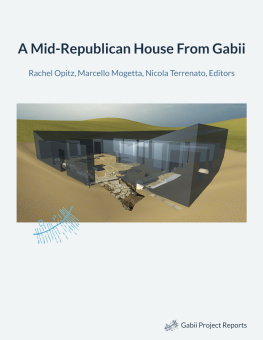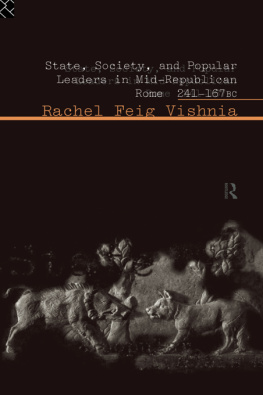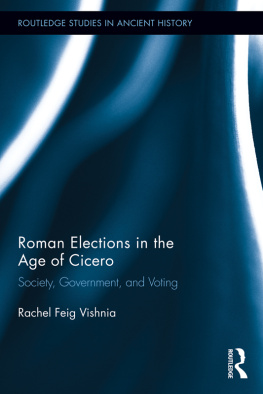Dear Reader
Coming into the middle of the story
The town of Gabii, located on one of the many roads that run out east from Rome, has proved full of surprises. Since the beginning of the Gabii Project in 2007 and in particular since the start of excavations in 2009, the variety of evidence has challenged us (for an overview see Becker, Mogetta, and Terrenato 2009; Mogetta and Becker 2014). We find ourselves investigating a town like and unlike Rome, a place at once unique and part of a regional context. The picture remains and will remain partial, as we continue to uncover new areas. How can we begin to tell the story of the town, when we are not yet certain what that story is? We can start from the traditional historical narrative, the regional context, and assume that, while there are problems, the site fits broadly into the regional paradigm. Alternatively, we can start from the archaeology itself and build from the local, specific picture outward. If we follow the latter path, we almost inevitably drop into what feels like chapter 3 of the story. Even with geophysical survey and coring to guide the choice of the initial excavation area (Becker, Mogetta, and Terrenato 2009), what is uncovered rarely tidily forms the beginnings of a narrative of the town.
The Gabii Project volumes begin not properly, at the very beginning of an overarching narrative, but with the story of a single house within the townlocated just north of the citys trunk road and slightly east of its mid-point. This is the first of what will be many small windows into the archaeology and history of the town. The initial volume, A Mid-Republican House from Gabii, describes a house known as Area B or Tincu House that is transformed into the back-rooms annex of a large public complex and then abandoned and filled with debris from adjacent quarries. Our interpretation of the evidence found in this area is framed in terms of a sequence of activities.
Thinking in terms of activities
We discuss much of what happened at Gabii in terms of activities. We have defined a set of activity categories, with which we have associated key stratigraphic units. The use of activities as a framework is an attempt to span a number of cultural contexts and to think outside the paradigm of architectural styles and canonical typologies and outside of the framework of historical events. By using activities, we may conceptually group together the beaten earth floors of the occupation levels of Archaic huts in Area D with the tufo walls of the Area B house, on the basis of their shared importance for creating domestic spaces. We may likewise bring together the digging of a grave in the necropolis that comes after the abandonment of the Tincu House area with the construction of a new entrance to the Tincu House courtyard when it becomes an annex to the Area F public complex, as both represent transformations. The activities we have identified to stitch together the story of the site currently include construction, renovation, water management, inhabitation, transformation, dumping, and abandonment. Individual stratigraphic units may be associated with more than one activity; for example, a stratigraphic unit belonging to a wall might be associated with both construction and inhabitation. More activities will likely be added to the scheme as the project grows. We briefly describe the current activity categories here.
Construction: Construction activities are related to initial building episodes or to major building episodes generally associated with a transformation of the use of an area.
Renovation: We use the term renovation when changes to a physical structure or the organization of a space are made but the main activities within it stay the same.
Water Management: Water management activities include the construction of surface and sub-surface drains, cisterns, or wells and the blocking up of structures with these functions.
Inhabitation: The term inhabitation is used to describe activities in residential, domestic contexts.
Transformation: The term transformation denotes activities associated with a fundamental change in the use of an area and in the main types of tasks and actions taking place there. A change from a primarily domestic use to a primarily industrial one would constitute a transformation.
Dumping: The term dumping describes the active phase of the abandonment process, when people continue to frequent an area.
Abandonment: The term abandonment indicates the end of the active use of an area. We also use the term in situations where activity has lessened substantially but has not entirely ceased.
 Figure 1:
Figure 1: Activities icons used in the Gabii publications: abandonment, construction, dumping, living, reconstruction, transformation, and water management.
The layered and linked text
The text of A Mid-Republican House from Gabii is structured in three layers. In the first layer, we begin by telling the story of the house, the narrative of our best understanding of what happened. The second layer contains a more detailed, analytical discussion of the archaeology. The third layer provides a detailed presentation of key elements of the supporting evidencereferences to the specific stratigraphic sequences and material remains that support the argument and the story. The narratives link to one another and to the interactive 3D scene that contains a reconstruction of the houses and models of the stratigraphy. The 3D scene provides links into the project's database. As new areas of the excavation are published, the data for them will become available in this format.
Symbols for things and activities
To provide a quick visual reference to the kinds of activities with which specific stratigraphic elements are associated and the types of evidence provided, we have created a system of symbols. The symbols, shown in , appear in the information panel associated with each stratigraphic unit in the 3D scene.
 Figure 2:
Figure 2: Icons representing the types of evidence present at Gabii: fauna, ceramics, coins and other small objects, human remains, and flora.













 Figure 1: Activities icons used in the Gabii publications: abandonment, construction, dumping, living, reconstruction, transformation, and water management.
Figure 1: Activities icons used in the Gabii publications: abandonment, construction, dumping, living, reconstruction, transformation, and water management. Figure 2: Icons representing the types of evidence present at Gabii: fauna, ceramics, coins and other small objects, human remains, and flora.
Figure 2: Icons representing the types of evidence present at Gabii: fauna, ceramics, coins and other small objects, human remains, and flora.